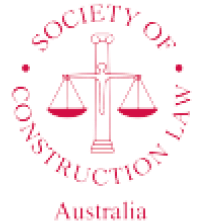Piercing the Corporate Veil: When May a Director be Personally Liable?
White Ribbon, a charity fighting violence against women, went into liquidation due to financial woes and limited liability issues.
In late 2019, the controversy-riddled charity White Ribbon finally succumbed to its wounds and declared that it would go into voluntary liquidation.
White Ribbon, whose mission was to combat violence against women, had faced a number of headwinds, and its newly appointed chief executive Tracy McLeod Howe was attempting to salvage what she could of the organisation.
The foundation’s financial woes, however, were considerable by the time she took the reigns. With the Daily Telegraph revealing that its liabilities exceeded its assets by over $840,000, the charity was on the inevitable and unpleasant path towards liquidation.
White Ribbon was structured in a way that many charities are, as a corporate entity (rather than, for instance, a partnership). It was a public company with ‘limited liability’.
A company is a legal entity that is separate from its owners or shareholders. The doctrine of limited liability means that a company has the legal rights and obligations of a natural person, and can sue and be sued in its own name. This separation between the owners and entity is known as the ‘corporate veil’.
In certain, very limited circumstances however, the corporate veil can be ‘lifted’ or ‘pierced’, meaning that the owners (or shareholders) can be held personally liable for the actions of the corporation.
Although there is no definitive set of circumstances in which the corporate veil may be pierced, the Corporations Act 2001 (Cth) along with relevant case law, provide guidance as to when the corporate veil may be pierced. For example, the corporate veil may be pierced in the following circumstances:
- Agency – Where a company’s shareholder (be it a parent company or natural person) has such a degree of control that the company is held to be an agent of the shareholder. In such a case, the acts of the company are deemed to be those of the shareholder.
- Fraud – If a corporation is used by the controller to evade legal or fiduciary obligations. In these circumstances, the corporate veil would only be pierced if the controller has ‘the intention to use the corporate structure in such a way as to deny the plaintiff some pre-existing legal right’.
- Sham or façade – Where the corporation is used as a ‘mask’ to hide the real purpose of the controller.
- Group enterprises – Where each individual entity in a corporate group is indistinguishable and it is justified to treat the parent company as liable for the acts of the subsidiary.
- Unfairness and justice – Where piercing the corporate veil will bring about a fair or just outcome.
For more information about your rights and duties as a director or shareholder please contact Warlows Legal for a free consultation.
You may also be interested in
Client Testimonials
Please call us to arrange an initial consultation
Our expertise in our respective fields is widely acknowledged. Drawing upon our practical experience, we consistently produce the positive and reliable results our clients expect. We would love to stay connected with you and keep you up to date with all relevant legal issues and expertise.
Subscribe to our email updates by entering your email below, or simply message or call us on +61 3 9212 0238




